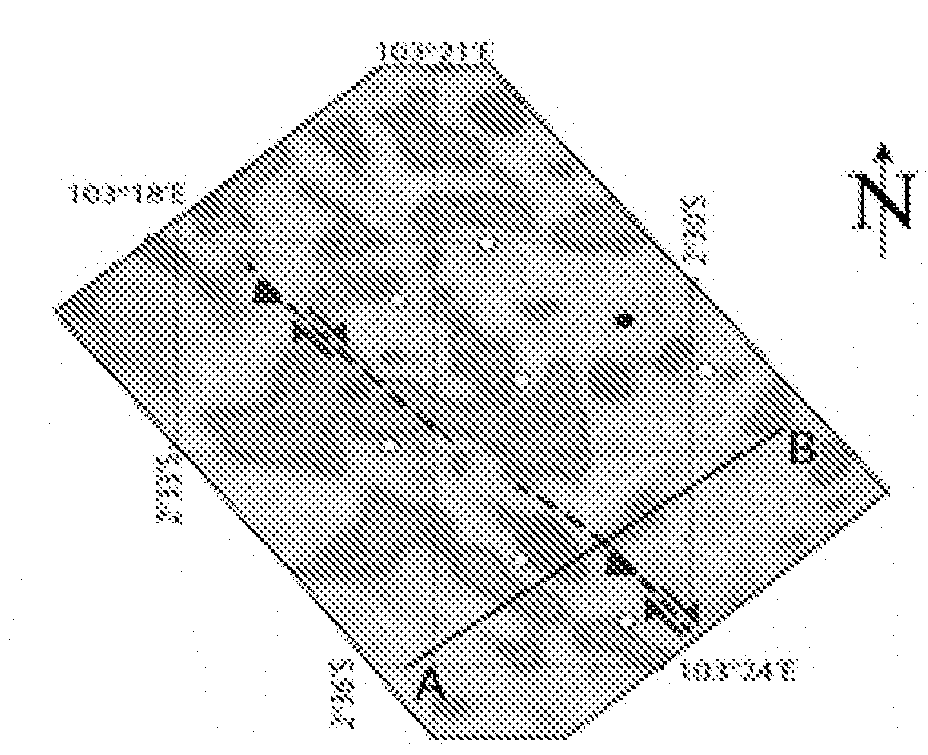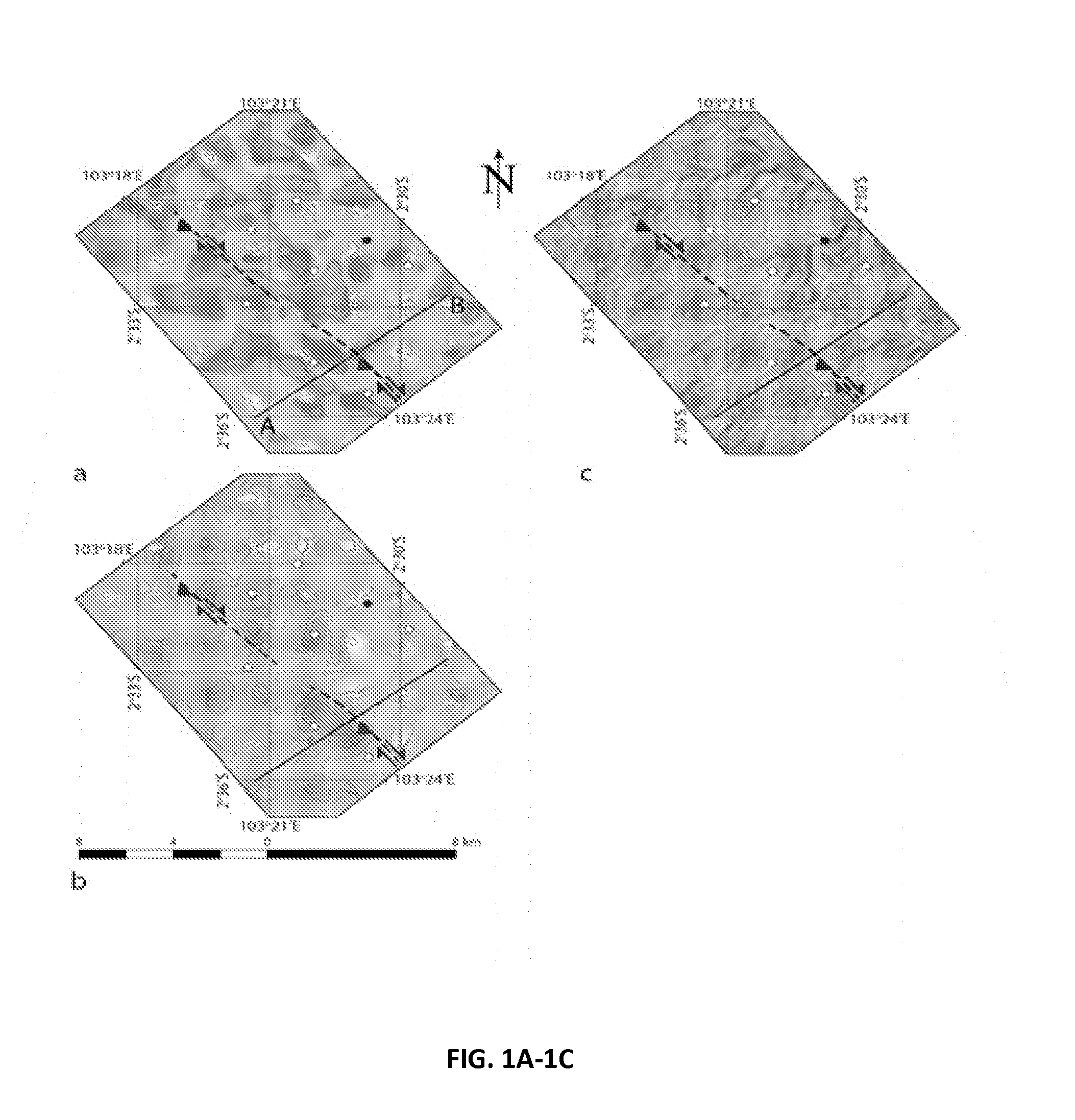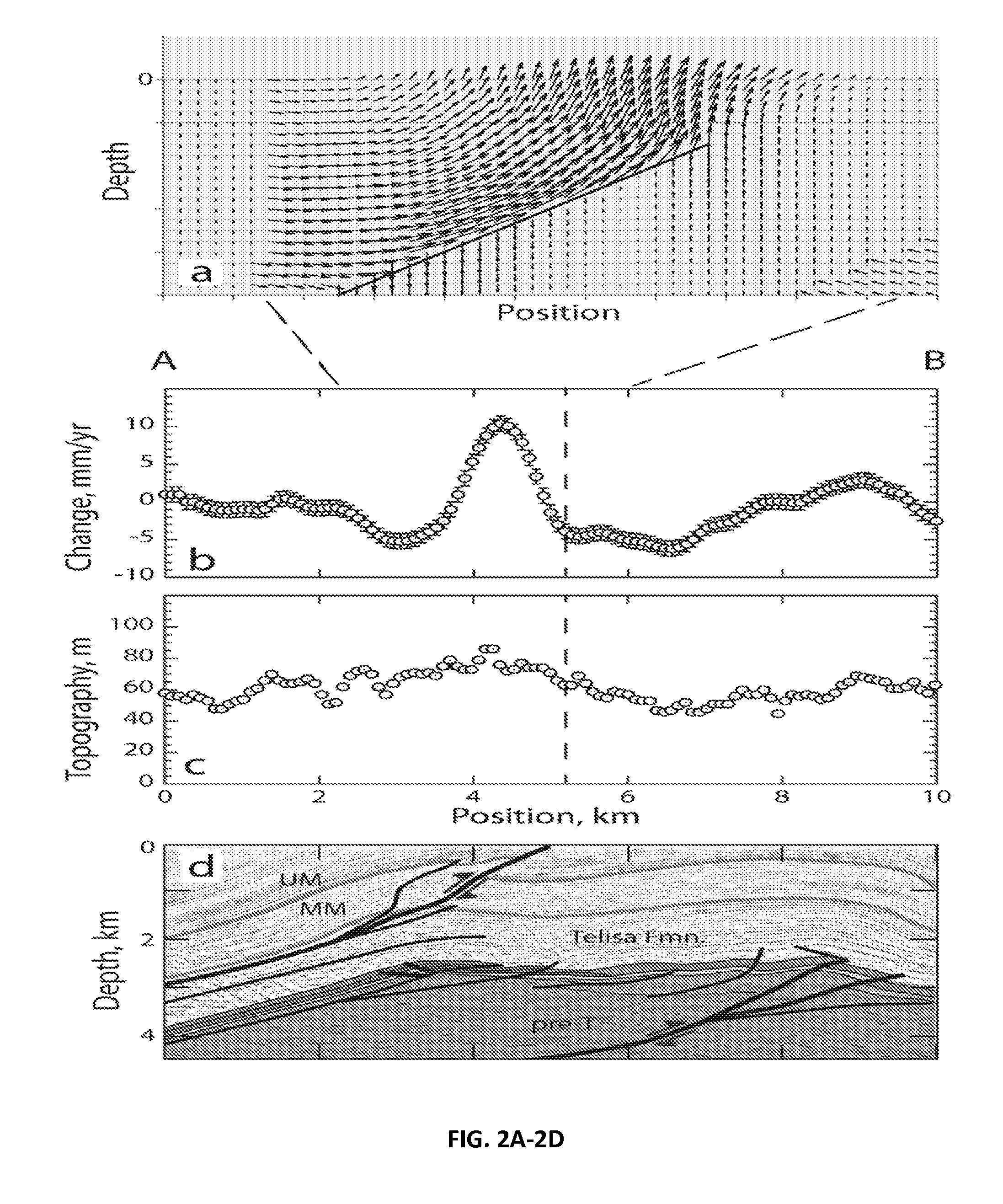Satellite geodesy and reservoir performance
a satellite geodesy and reservoir technology, applied in the field of remote sensing of subterranean formations, can solve the problems of limited number of non-subsurface analytical methods, sensitive and expensive equipment for collecting computationally intensive data, and inability to accurately detect the depth of the reservoir
- Summary
- Abstract
- Description
- Claims
- Application Information
AI Technical Summary
Benefits of technology
Problems solved by technology
Method used
Image
Examples
example
[0022]This Example describes an embodiment of the present invention as applied to an oil and gas producing field, Suban field located in Sumatra, Indonesia (e.g., Schultz et al., 2014a, b). Synthetic aperture radar data were obtained from the Advanced Land Observing Satellite (ALOS) via an L-band (23.6 cm wavelength) radar which provides good temporal coherence for constructing interferograms. Twenty-six obtained raw images (19 ascending and 7 descending acquisitions) were used to perform an interferometry analysis (e.g., Soofi and Sandwell, 2010; Tong et al., 2013).
[0023]During the interferometry analysis, raw binary radar images were pre-processed and focused to form full-resolution SAR images. All SAR images were aligned to a single image with 2D cross-correlation techniques. Typically, the image alignment needs to be accurate within ˜1 pixel (˜10 m) in order to construct the interferograms. During this process, phase due topography was removed and the residual phase was unwrappe...
PUM
 Login to View More
Login to View More Abstract
Description
Claims
Application Information
 Login to View More
Login to View More - R&D
- Intellectual Property
- Life Sciences
- Materials
- Tech Scout
- Unparalleled Data Quality
- Higher Quality Content
- 60% Fewer Hallucinations
Browse by: Latest US Patents, China's latest patents, Technical Efficacy Thesaurus, Application Domain, Technology Topic, Popular Technical Reports.
© 2025 PatSnap. All rights reserved.Legal|Privacy policy|Modern Slavery Act Transparency Statement|Sitemap|About US| Contact US: help@patsnap.com



